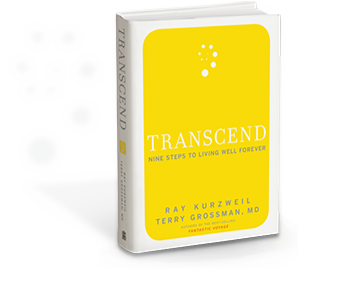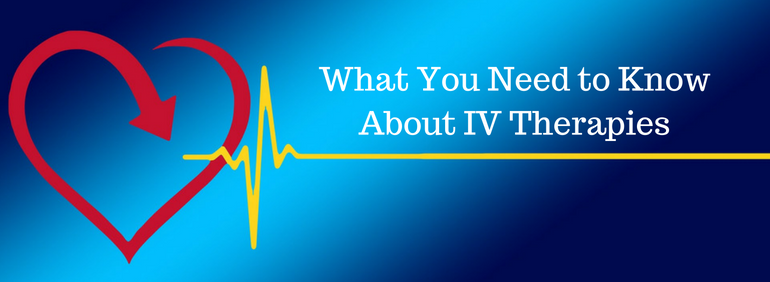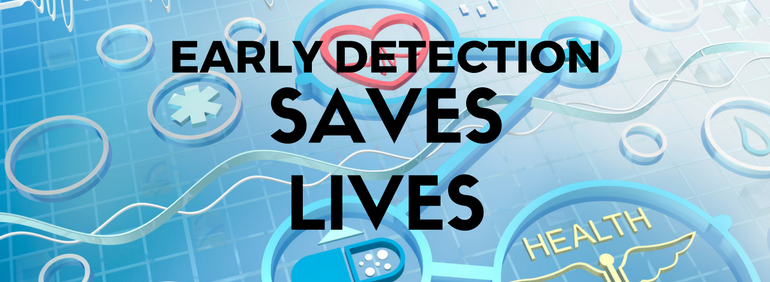What Are Hormones?
The brain controls the body through two main pathways: nerves and hormones. Nerves carry electrical impulses traveling up to 270 mph to transmit a signal almost instantaneously. It is the equivalent of placing a text message to a friend. Hormones on the other hand are chemical messengers. Hormones are the equivalent of sending a snail mail letter to reach a friend. You can think of the endocrine system like a symphony: if one instrument is out of tune it can throw the whole thing off. The major hormones are the sex hormones – estrogen, progesterone and testosterone; the stress or adrenal hormones, cortisol and DHEA; and the thyroid hormones.
There are actually hundreds of hormones including aldosterone (which controls blood pressure), ADH (which regulates body water) and digestive hormones such as cholecystokinin and pancreozymin.
The Problem with Hormone Decline
Hormone decline is a natural consequence of aging. It typically begins around age 30 and often becomes noticeable for many people after 50 years of age. The reason is that the genetic code that regulates our hormones was created tens of thousands of years ago but has never been updated. Our genes were designed to ensure survival of the human species in the Stone Age. Lower hormone levels cause muscles to shrink, hearing and vision to deteriorate, and brain and lung function to decline. This was beneficial long ago when calories were scarce and starvation a daily occurrence, as it helped remove “older” cave-dwelling humans (those more than 30 years of age) from competing with younger people for food, but this is no longer relevant and rarely useful today.
Although changes from lower hormone levels typically occur with aging, many of these symptoms can be slowed, stopped and at times reversed by administration of hormones.
Bioidentical Hormones
At GWC, we use only bioidentical hormone replacement therapy. The estrogen, progesterone and testosterone we prescribe is chemically identical to what is naturally found in an individual’s body. Side effects and health risks associated with bioidentical hormones are typically much less than seen with synthetic drug hormone substitutes.
Testosterone
Testosterone is among the most powerful anti-aging hormone. Testosterone is regulated by the FDA as a controlled medication. It is only available by prescription and requires ongoing physician monitoring. As part of your initial evaluation, we will measure your total and free (or bioavailable) testosterone levels in your bloodstream Based on these results, you may be a candidate for our WAP (Women Aging Perfectly) or BAM (Best Aging Males) Hormone Replacement programs. One key part of these programs is to increase low or suboptimal levels of testosterone to an optimal range. [Note: Because testosterone is a controlled drug, it can only be used to treat a diagnosed testosterone deficiency. It cannot be used for anti-aging purposes alone, but only for documented low levels. To qualify for the Hormone Replacement programs, your hormone levels need to be suboptimal before we can offer you the option of using testosterone therapy.]
Testosterone Therapy can reduce and, in some cases, reverse the effects of age-related declines. This translates into a reduction or reversal of many symptoms related to aging. There are several common methods for testosterone supplementation including:
Oral testosterone is rarely used because testosterone is broken down by gastric acid. Oral testosterone formulations that prevent degradation by stomach acid are available, but rarely used since they have been found to be associated with liver toxicity. Sublingual administration of testosterone is available which involves allowing the tablet to melt beneath your tongue. This leads to direct absorption through the mucous membranes and bypasses the digestive system.
Topical creams and patches. These are available as name brand prescription drugs such as Androgel or Testim, however, they are expensive – typically $4,000 a year or more. Generic testosterone creams can be obtained from compounding pharmacies for less money but require daily application and are often inconvenient when traveling.
Injectable testosterone is available in either name brand or generic formulations for men and women. Administration is done via tiny, virtually painless insulin-like needles. Absorption of the medication is consistent, and injections are typically done once a week by women and once or twice a week for men. Injections of human chorionic gonadotropin (hCG) and/or use of oral clomiphene are desirable methods for raising testosterone levels in younger men.
Pellets are smaller than a grain of rice and inserted beneath the skin, typically in the upper hip. The hormone is released at a steady rate from the pellets over a period of 4 months in women and 5 to 6 months in men at which time they may be replaced.
We most often utilize injectable or pellet administration methods and occasionally topical or sublingual preparations for testosterone replacement
After beginning testosterone therapy, ongoing follow up is critical. The goal is to achieve testosterone levels in the bloodstream that are adequate for reversal of age-related symptoms, but not so high as to cause adverse side effects. Testosterone is converted into estradiol in the body. In menopausal women, this is often beneficial, but in men can lead to estrogenic side effects such as prostate enlargement and hair loss. There is also speculation that elevated estradiol levels increase risk of prostate cancer. Estradiol levels are monitored in both men and women, and if elevated in men, we will use medications or nutritional supplements to reduce the conversion of testosterone to estradiol.
Estrogen
There are numerous benefits associated with estrogen replacement therapy for women with lower or declining levels. These include:
- Prevention of osteoporosis
- improved cholesterol profile and protection against heart disease
- Improved mood and reduced incidence of depression
- Reduction of menopausal symptoms (hot flashes and vaginal dryness)
- Improved concentration and sleep
- Prevention of Alzheimer’s disease
- Increased libido
Menopausal symptoms
As women approach menopause, circulating estrogen levels decrease dramatically. Fluctuations in hormone levels may proceed the complete cessation of menstruation by several years before menopause itself. During this interval of a woman’s life which is referred to as the perimenopause, there are often uncomfortable sensations and symptoms such as the characteristic hot flashes and mood swings. Hormone replacement therapy can reduce these symptoms and allow this transition through the peri menopausal and menopausal years more comfortable.
Progesterone
As a woman approaches menopause, she may continue to have her monthly menstrual cycle without ovulating. This means that her ovaries are producing estrogen but in the absence of ovulation, little or no progesterone is produced. Estrogen tends to cause hormonally sensitive tissues in a woman’s body such as the ductal tissue in the breasts and the inner lining of the uterus to grow. Progesterone serves to stop this growth and the two hormones work together to create balance.
If a woman is having periods without ovulation, circulating levels of estrogen are high without the modulating influence of progesterone. This may increase risks of hormonally sensitive cancers such as those of the breast and endometrium. Many practitioners of precision medicine such as GWC will use progesterone in the peri menopausal period to provide a level of protection as well for as its anti aging benefits.
DHEA and Melatonin
Two anti-aging hormones, DHEA and melatonin, are available in the United States without a prescription and are included in our daily POW™ Supplement Packs. POW Packs are included with the WAP and BAM programs at no additional charge. DHEA is an adrenal hormone that helps combat stress-induced damage and melatonin in a brain hormone that induces deeper sleep and also has anti-cancer and immune-modulating benefits.
Some Specific Hormone Imbalance Problems
Estrogen Dominance
Men, do not think this doesn’t apply to you! When it comes to hormone levels, too much or too little can be problematic. In men, estrogen levels that exceed the optimal range create an problems, including weight gain, muscle loss, gynecomastia (male breasts), increased emotional feelings, increased risk of heart disease, and prostate problems.
In women estrogen levels are evaluated in reference to their ratio to progesterone. Estrogen levels may be normal, but if progesterone is suboptimal, signs and symptoms of imbalance occur. Similarly, if estrogen is high but progesterone is normal, an imbalance occurs.
Most common is the case of “estrogen dominance.” Symptoms of estrogen dominance include:
- Decreased sex drive
- Irregular or otherwise abnormal menstrual periods (women)
- Bloating (water retention)
- Breast swelling and tenderness (women)
- Fibrocystic breasts (women)
- Headaches
- Mood swings (most often irritability and depression)
- Weight and/or fat gain (particularly around the abdomen and hips)
- Cold hands and feet (a symptom of thyroid dysfunction)
- Hair loss
- Thyroid dysfunction
- Sluggish metabolism
- Foggy thinking, memory loss
- Fatigue
- Trouble sleeping/insomnia
- PMS (women)
Estrogen dominance has also been linked to allergies, autoimmune disorders, breast cancer, uterine cancer, infertility, ovarian cysts, and increased blood clotting, and is also associated with acceleration of the aging process. Many factors contribute to estrogen dominance, including anovulatory cycles in menstruating and peri menopausal women; excess body fat (body fat is an estrogen-producing machine); high stress which leads to high levels of cortisol, insulin, and estrogen; poor liver or kidney function; and exposure to environmental xenoestrogens, which are chemicals with a molecular structure very similar to estrogen, found in everything from plastic and receipt paper to car exhaust and pesticides on food. Estrogen dominance is extremely common in modernized societies in both men and women.
Low Testosterone
Just as men can experience imbalances with estrogen, both men and women can experience issues with suboptimal levels of testosterone. Testosterone is one of the body’s primary anabolic hormones, helping with tissue healing and repair, muscle synthesis, energy, drive, motivation, and sexual performance. Hormone production naturally declines with age, particularly past the age of 35. Between the ages of 45-55, most women and men enter “menopause” or “andropause,” respectively. a period of marked hormonal shifts. At this time, the sex organs (ovaries and testes) pass hormone production responsibilities to the adrenal glands. Healthy adrenal glands will keep testosterone at adequate levels (though still reduced as compared to young adult years). However, due to chronic stress which is nearly universal today, fatigued or stressed adrenals will not be able to keep up, and hormone production, including testosterone, goes down with it. If elevated estrogen is also a problem (very likely), symptoms are aggravated.
Solutions
As with many aspects in medicine, once the problem is identified, the solution becomes obvious. In the case of hormones, the root issue of the imbalance must be addressed for long-term balance to be achieved. Testing is imperative for this. Evaluating hormones as part of a complete blood work up is a great start. This will reveal not only hormone levels but other possible contributing factors to imbalance. Once the issue is identified, a variety of natural approaches can be utilized to restore balance:
- Certain herbal remedies can be used to enhance your own production of hormones.
- Liver and intestinal detoxification can be particularly helpful in the case of hormone excesses.
- Hormone replacement therapy can also prove useful in correcting hormone deficiencies, providing rapid relief of symptoms, and promoting healthspan and longevity.
There is no one-size-fits-all approach in medicine, especially when talking about restoring hormone balance. At GWC, the mini-concierge programs, WAP and BAM, are specifically designed to address these issues. These programs ensure that your needed lab work, office visits, and hormone replacement is streamlined and effortless. Regular testing and physician checkup appointments ensure you maintain balance and do not “slip through the cracks.” In addition, our highly skilled nutrition team is well versed in identifying and addressing the underlying causes of dysfunction and addressing them through a variety of dietary, lifestyle, and supplement factors. There is a unique solution for everyone, and you will receive team-oriented medical treatment that far exceeds the standard of care.
At GWC, good hormone levels are not good enough. We want all our patients to experience the benefits of optimal levels.









